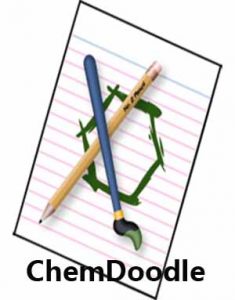

- CHEMDOODLE FORMAL NUMBERS SERIAL NUMBER
- CHEMDOODLE FORMAL NUMBERS MANUAL
- CHEMDOODLE FORMAL NUMBERS FOR ANDROID
- CHEMDOODLE FORMAL NUMBERS LICENSE
- CHEMDOODLE FORMAL NUMBERS DOWNLOAD
NOTE: You can install copies of the software on your own computers using the same serial number or activation code.ĬhemDoodle has been licensed by Instructional Technology in the Department of Chemistry for use by anyone with a valid email address. For all other graduate students, faculty or staff:.For graduate students, faculty or staff in the School of Chemical Sciences (Chemistry or Chemical and Biomolecular Engineering): go to.
CHEMDOODLE FORMAL NUMBERS DOWNLOAD
To install the software package on a personal computer, download it by following the instructions below. Undergraduates may purchase the software from the UI Webstore.
CHEMDOODLE FORMAL NUMBERS LICENSE
The School of Chemical Sciences subsidizes the ChemOffice license for graduate students, faculty, and staff of the School of Chemical Sciences of the University of Illinois at Urbana-Champaign. ChemDraw is a chemical structure drawing software package designed to help both the beginning chemistry student and the expert researcher. VMD is a molecular visualization program for displaying, animating, and analyzing large biomolecular systems using 3-D graphics and built-in scripting.ĬhemOffice, a suite of software which includes ChemDraw, Chem3D, and Chemfinder. Theoretical and Computational Biophysics Group For seasoned users of other drawing software there is an inevitable period of familiarisation and learning new keyboard shortcuts, but it’s worth the effort – ChemDoodle is enthusiastically recommended.Information about Visualization and software relating to that.
CHEMDOODLE FORMAL NUMBERS FOR ANDROID
Space permits only cursory mention of the excellent nanotube builder, the Twitter integration, the truly epic selection of handsomely drawn lab glassware, the web components for incorporation into any website, the extensive template menu with adjustable substitution points, and the (included) mobile versions for Android and iOS. It’s noteworthy that the headline price is for the fully featured package – there is no standard/premium split, although there is a cheaper ‘student’ version with some restrictions. Indeed, after spending long enough with ChemDoodle to acclimatise and explore the breadth of features, the higher cost of alternative chemical drawing programs becomes very difficult to justify. It might be tempting to assume that the bargain-basement price reflects a budget clone of costlier, better known software, but nothing could be further from the truth. Perhaps most striking of all is ChemDoodle’s price.

This could be improved to a degree by altering the rendering settings to favour speed over quality.ĬhemDoodle's Twitter integration in action, showing the structure of fawcettimine However, there was a noticeable slowdown when editing a large file of about 60 complex molecules, which made editing the structures cumbersome. ChemDoodle proved stable enough to handle almost everything thrown at it, manipulating maitotoxin – a molecule with 32 rings and 98 stereocenters – in three dimensions without complaint. Structures and schemes can be embedded as editable objects in iWork, Microsoft Office and Open Office, although a workaround is required for newer versions of iWork Pages. Most major chemistry file formats can be read and written and, with a couple of exceptions in particularly complex cases, formatting and document settings are retained. This extends beyond two-dimensional drawings to the included ChemDoodle 3D, where three-dimensional visualisations of molecules can be endlessly customised. Almost anything can be tweaked, from the obvious bond lengths and thicknesses to highly specific parameters such as the preferred placement of double bonds in fused-ring systems, the size and shape of the white-space buffer around atom labels and even the shape of the end of a bond. Nowhere is that level of control more apparent than in the gargantuan settings menus. This idea is indicative of ChemDoodle’s approach: keeping things simple for the novice while affording the expert as much freedom and control as possible. Keep the cursor inside the circle and the new bond will be placed in the (usually reasonable) recommended position move it outside and the bond can be drawn in any direction with standard length and angle hold down shift or alt and fine control is granted over length or angle, respectively.

When clicking and holding to sprout a new bond from an existing atom, a blue circle appears.
CHEMDOODLE FORMAL NUMBERS MANUAL
Next to catch the eye might well be what the ChemDoodle manual calls the ‘Optimize Zone’ but what users are more likely to think of as ‘that blue circle’. The antiviral drug sofosbuvir illustrated using the ‘cartoon’ shader in ChemDoodle 3D


 0 kommentar(er)
0 kommentar(er)
